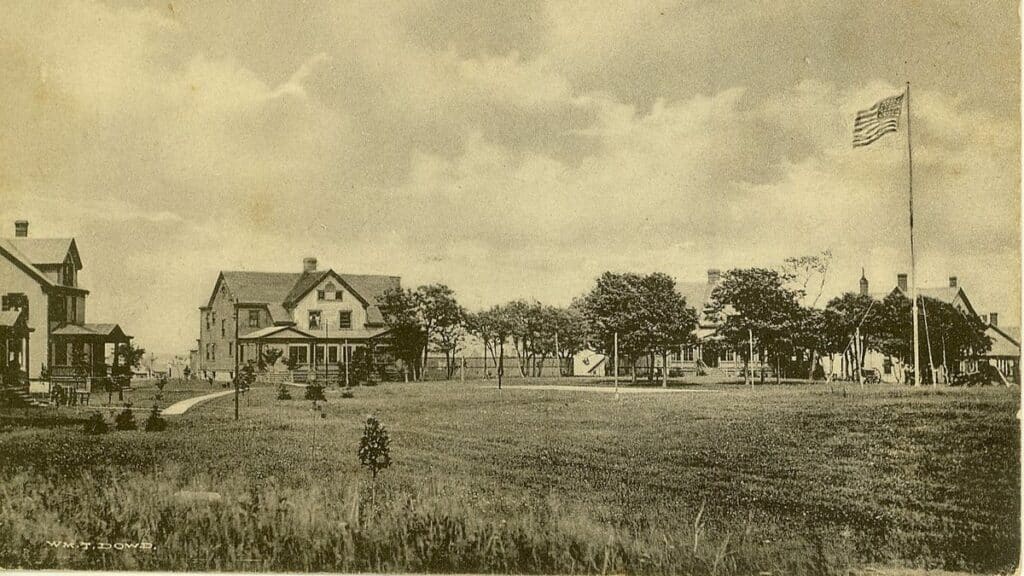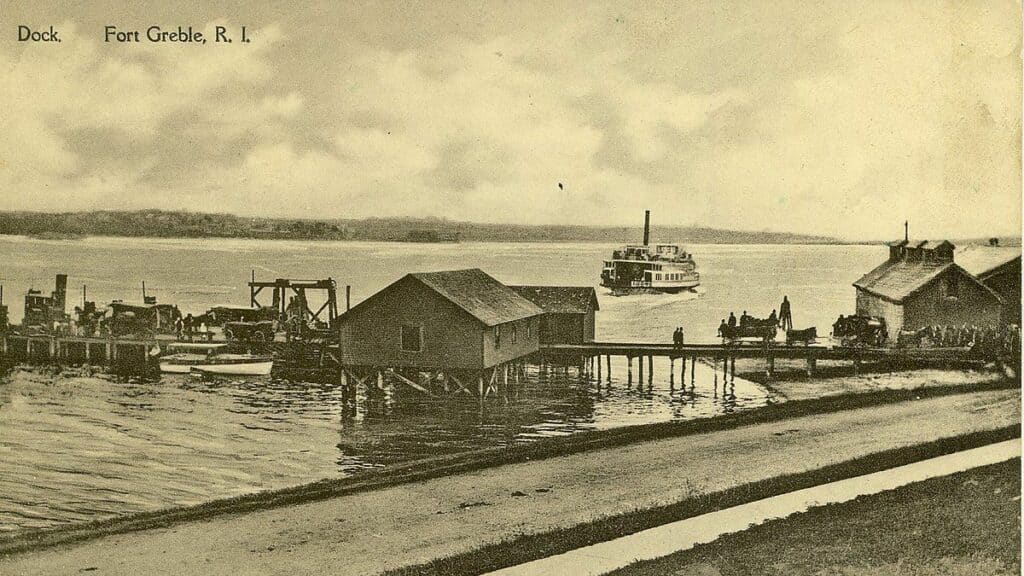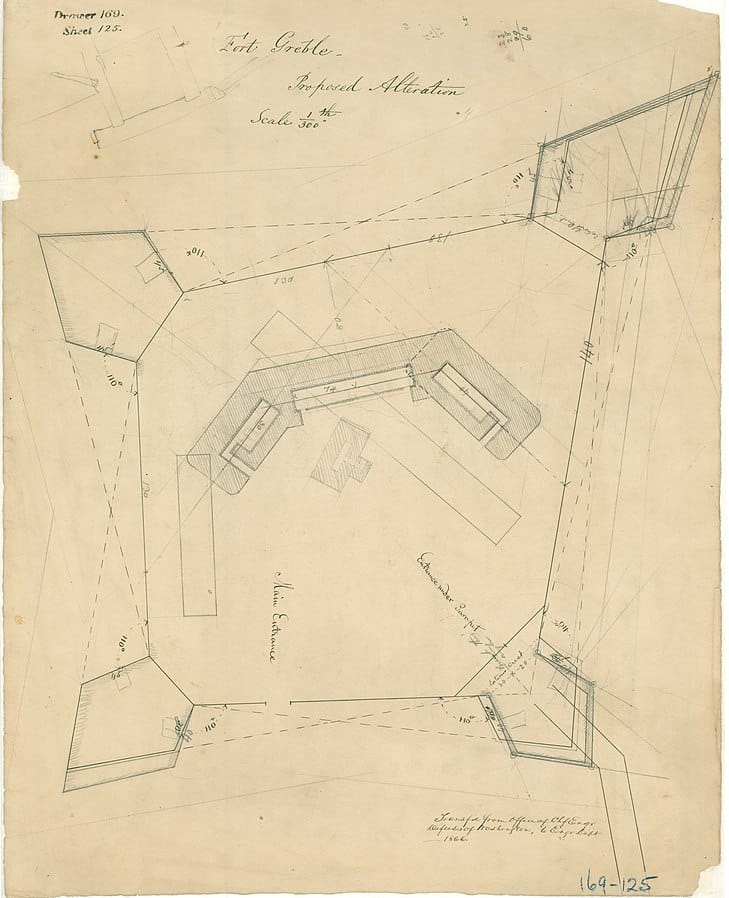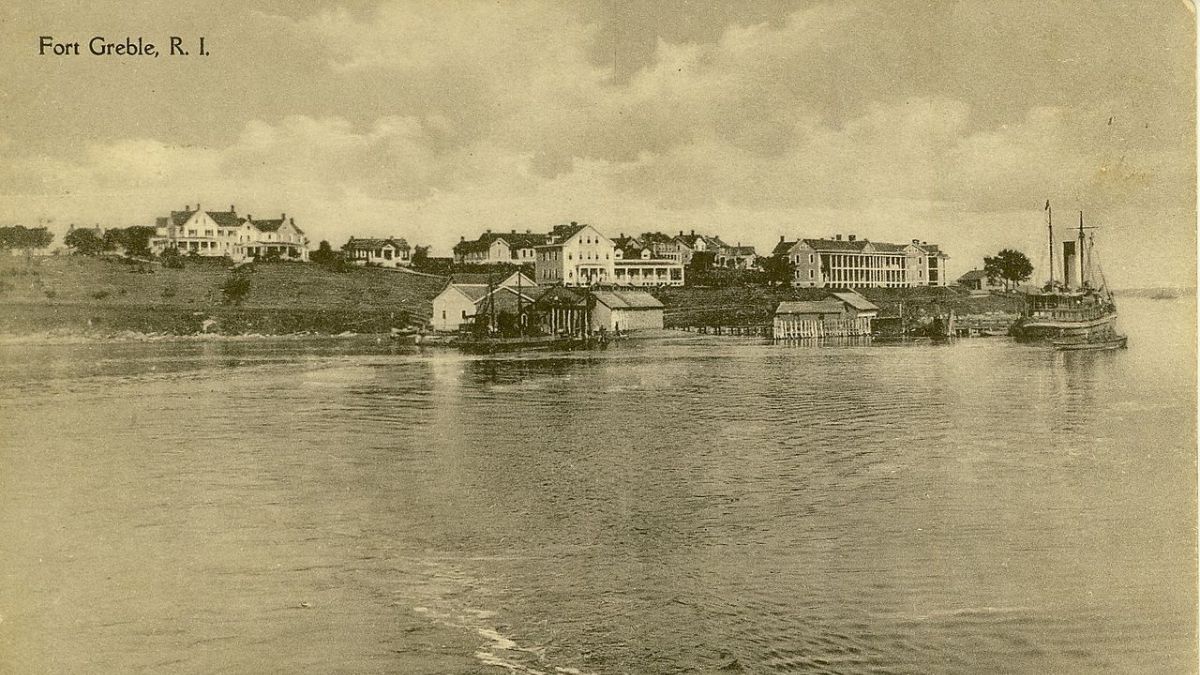Fort Greble, located in Washington, DC, is part of a ring of Civil War defenses constructed to protect the nation’s capital.
Visitors can explore the remnants of this historical site and gain a deeper insight into the military strategies employed during the Civil War.
This park offers a glimpse into the past and provides a peaceful retreat in an urban setting.
The fort played a crucial role in Washington, DC’s defense network. Its strategic importance and placement helped safeguard the city from potential Confederate attacks.
Walking through the park, one can imagine the fort’s importance during a turbulent time in American history.
Today, Fort Greble is a quiet sanctuary that educates the public about the Civil War while preserving the area’s natural beauty.
Fort Greble is a notable destination for history enthusiasts or those simply looking for a tranquil outdoor space.
History of Fort Greble

Fort Greble played a critical role during the Civil War, particularly in the defense efforts surrounding Washington, D.C. Its involvement in key battles and strategic fortifications underscored its importance in military history.
Role in the Civil War
Fort Greble was part of the Eastern Branch Defenses, aimed at protecting Washington, D.C., from Confederate attacks.
Located near the Potomac River, it was vital for monitoring and defending against enemy advances.
The fort was part of a series of defensive positions, including Battery Carroll, which collectively formed the Civil War Defenses of Washington.
Battle of Big Bethel
Fort Greble’s troops were involved in the early stages of the Civil War, including the Battle of Big Bethel.
This conflict was one of the first land battles of the war. Union troops aimed to disrupt Confederate forces in Virginia.
Though not a significant victory for the Union, the battle highlighted the tactical movements and strategic importance of such fortifications.
Civil War Defenses of Washington
The fort was a crucial component in the Civil War Defenses of Washington. It was one of 68 forts and batteries that formed a ring around the capital.
These installations were designed to protect the city from Confederate attacks, especially during key moments of the war.
Their presence helped to deter large-scale assaults and provided a strong defensive network.
Brigadier General John G. Barnard’s Contributions
Brigadier General John G. Barnard played a significant role in the design and construction of Fort Greble.
As the Chief Engineer of the Defenses of Washington, he was responsible for the strategic layout and coordination of fortifications around the city.
His expertise ensured that Fort Greble and other defense sites were effectively integrated into the capital’s security plan, reinforcing its defensive capabilities.
Geography and Terrain

Fort Greble is situated advantageously in terms of strategic location and natural features. Its position near major water bodies and diverse terrain significantly benefits military operations and historical importance.
Strategic Location
Fort Greble’s strategic location played a crucial role during its active years.
It was positioned to guard the southern approaches to Washington, D.C., and provided essential defense for the nation’s capital.
This location ensured control over key transportation routes, including roads and railways.
The fort’s elevation allowed for extensive visibility, enhancing its defensive capabilities against potential threats.
Plateau and Wooded Hills
Set on a plateau and surrounded by wooded hills, the terrain around Fort Greble offers natural defensive advantages.
The plateau’s higher ground provided a superior vantage point for surveillance and artillery placement.
Dense woods on the hills added cover and concealment, making it difficult for enemy forces to launch surprise attacks.
This combination of open and forested terrain maximized the fort’s defensive posture.
Potomac and Anacostia Rivers Proximity
Fort Greble is located near both the Potomac and Anacostia Rivers.
The proximity to these rivers facilitated transportation and supply routes during its operational period.
The Potomac River, in particular, provided a natural barrier against invasions from the west.
Access to the Anacostia River allowed for quicker movement of troops and resources.
This advantageous positioning by the rivers enhanced the fort’s logistical and strategic capabilities.
Fort Structure and Design

Fort Greble’s structure and design are characterized by its unique octagonal shape, strategic artillery placements, and the arrangement of units and dwellings within the fort.
Each aspect of the fort’s design serves specific purposes in terms of defense, functionality, and accommodation.
Octagonal Shape and Construction
The fort’s octagonal shape provides a balanced form that enhances defensive capabilities.
Constructed with earthworks and bricks, these walls are robust enough to withstand artillery attacks.
Each side of the octagon is 100-120 feet long, providing a symmetrical and defensible outline.
Entrances are minimized and strategically placed to control access, and earthen mounds bolster the thick walls.
The design philosophy behind the octagonal layout aimed to maximize interior space and defensive angles.
Artillery and Armaments
Artillery placements are crucial for Fort Greble’s defensive strategy.
The fort boasts multiple artillery batteries that can cover each approach.
The main armaments include smoothbore cannons, rifled cannons, and howitzers, offering a variety of offensive and defensive capabilities.
Additionally, pivotal guns are positioned to cover key areas, including the Potomac River approach and potential crossings from Virginia.
The fort’s arsenal, including ammunition stores, is well-guarded and strategically located to ensure quick access during engagements.
Units and Dwellings
Fort Greble is designed to house both permanent troops and transient units.
Barracks constructed of brick and wood provide accommodation for soldiers.
These dwellings are arranged in a manner that allows for efficient movement and readiness.
Each unit typically consists of sleeping quarters, dining areas, and operational rooms.
The fort also includes officers’ quarters, which are more spacious and located slightly apart from the main barracks to maintain command integrity.
Explore More: 10 Historic Forts in Rhode Island: A Journey Through Time
Aftermath and Legacy
Fort Greble’s influence continued post-Civil War through its transformation into a public space, civilian use, and integration into Fort Circle Parks.
Transformation into Public Space
After the Civil War, Fort Greble transitioned from a military base to a public park.
This shift involved the removal of military structures and the creation of green spaces.
The grounds were repurposed for community activities, fostering a sense of local heritage.
The new public space featured amenities like playgrounds and walking trails.
This provided recreational opportunities and preserved the site’s historical essence.
Fort Greble thus became an essential part of the community, blending history with modern utility.
Civilian Utilization
The conversion of Fort Greble enabled civilian groups to harness its resources.
Civilian Construction Gangs played a pivotal role in redeveloping the area.
They built facilities like playgrounds and baseball fields, transforming the space into an active community hub.
These facilities encouraged community engagement and physical activity.
Events and activities held at Fort Greble fostered social cohesion.
The location became a cornerstone for local gatherings, enhancing community spirit and well-being.
Fort Circle Parks Integration
Fort Greble was later incorporated into the Fort Circle Parks system.
This integration connected it with other historic forts, creating a cohesive network.
The Fort Circle Parks aimed to preserve historical sites while promoting public use.
This network provided educational opportunities and recreational spaces.
Fort Greble’s inclusion contributed to a broader historical and cultural narrative.
Visitors could explore multiple historic sites, enhancing their appreciation of the area’s heritage.
Preservation and Commemoration
Fort Greble has been the subject of significant preservation efforts to maintain its historical integrity.
These efforts include detailed documentation, educational initiatives, and ensuring current accessibility.
National Archives Documentation
The National Archives holds a wealth of information on Fort Greble.
Detailed records, maps, and historical documents provide insight into its role during the Civil War.
These archives include property deeds, military orders, and personal letters from soldiers stationed at the fort.
Researchers and historians use these documents to reconstruct the daily operations and significance of the fort as a training ground.
The National Archives’ website offers an accessible platform for cataloging these documents, which can be viewed digitally or requested for physical viewing.
Educational Significance
Fort Greble serves an important educational role for those interested in Civil War defenses and military history.
Tours and educational programs are routinely organized, providing insight into the fort’s strategic value and soldiers’ daily lives.
Schools and universities often include the fort in their curriculum. They offer field trips that allow students to engage with history tangibly.
Interpretive signage throughout the site details key events and functions, ensuring visitors comprehensively understand Fort Greble’s background.
The site also periodically hosts reenactments and living history demonstrations.
Current State and Access
Fort Greble is currently maintained as a historical site. Efforts are made to preserve its remaining structures, and restoration projects have stabilized key areas, making it safe for public visits.
Visitors can access the fort by a well-maintained parking lot.
They can then walk along paths that trace the original layout of the military installation. Informational plaques and trail markers guide visitors through significant sites within the fort.
Accessibility features have been added to ensure that everyone, including those with disabilities, can explore and learn about Fort Greble’s history.
The site continues to serve as a solemn reminder of its past and is fully available for educational and commemorative purposes.

Cory is a website owner and content creator who enjoys fishing, history, coin collecting, and sports, among other hobbies. He is a husband and father of four.
Romans 15:4 For whatever was written in former days was written for our instruction, that through endurance and through the encouragement of the Scriptures we might have hope.

